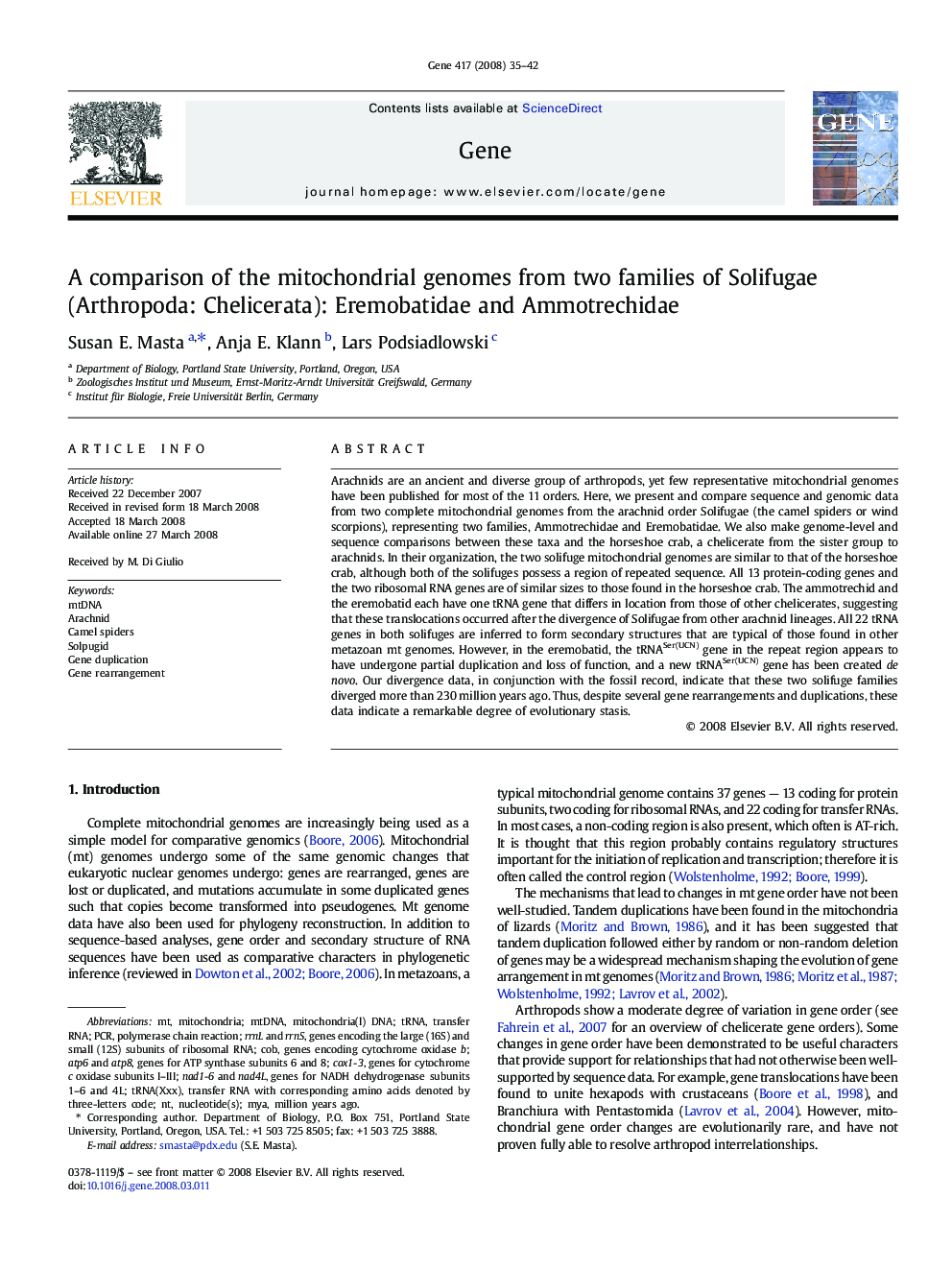| کد مقاله | کد نشریه | سال انتشار | مقاله انگلیسی | نسخه تمام متن |
|---|---|---|---|---|
| 2819238 | 1569913 | 2008 | 8 صفحه PDF | دانلود رایگان |

Arachnids are an ancient and diverse group of arthropods, yet few representative mitochondrial genomes have been published for most of the 11 orders. Here, we present and compare sequence and genomic data from two complete mitochondrial genomes from the arachnid order Solifugae (the camel spiders or wind scorpions), representing two families, Ammotrechidae and Eremobatidae. We also make genome-level and sequence comparisons between these taxa and the horseshoe crab, a chelicerate from the sister group to arachnids. In their organization, the two solifuge mitochondrial genomes are similar to that of the horseshoe crab, although both of the solifuges possess a region of repeated sequence. All 13 protein-coding genes and the two ribosomal RNA genes are of similar sizes to those found in the horseshoe crab. The ammotrechid and the eremobatid each have one tRNA gene that differs in location from those of other chelicerates, suggesting that these translocations occurred after the divergence of Solifugae from other arachnid lineages. All 22 tRNA genes in both solifuges are inferred to form secondary structures that are typical of those found in other metazoan mt genomes. However, in the eremobatid, the tRNASer(UCN) gene in the repeat region appears to have undergone partial duplication and loss of function, and a new tRNASer(UCN) gene has been created de novo. Our divergence data, in conjunction with the fossil record, indicate that these two solifuge families diverged more than 230 million years ago. Thus, despite several gene rearrangements and duplications, these data indicate a remarkable degree of evolutionary stasis.
Journal: Gene - Volume 417, Issues 1–2, 1 July 2008, Pages 35–42